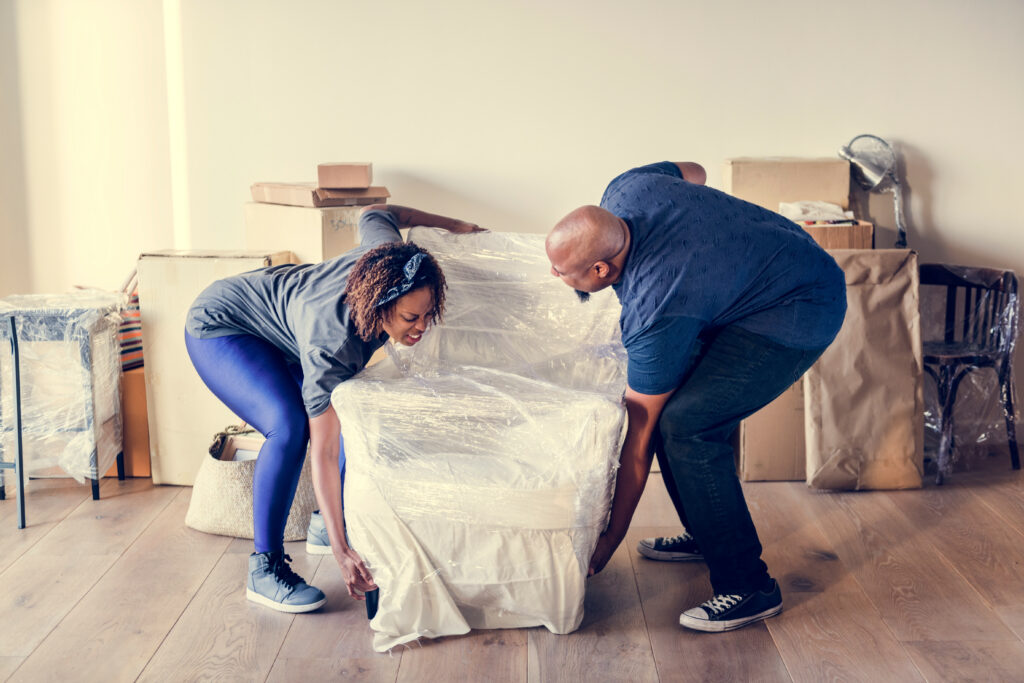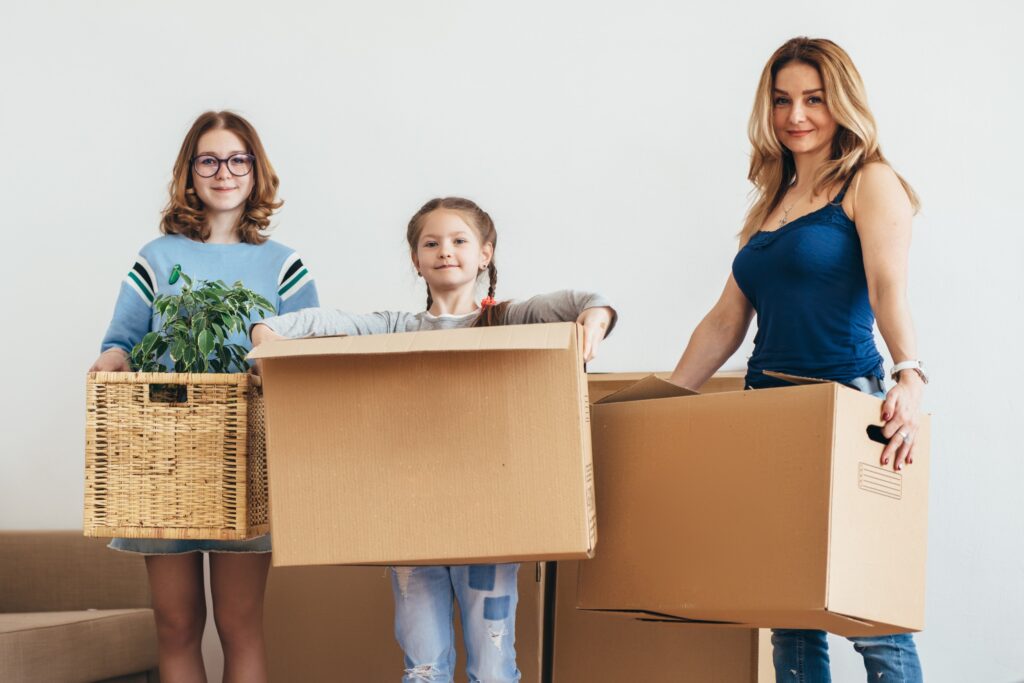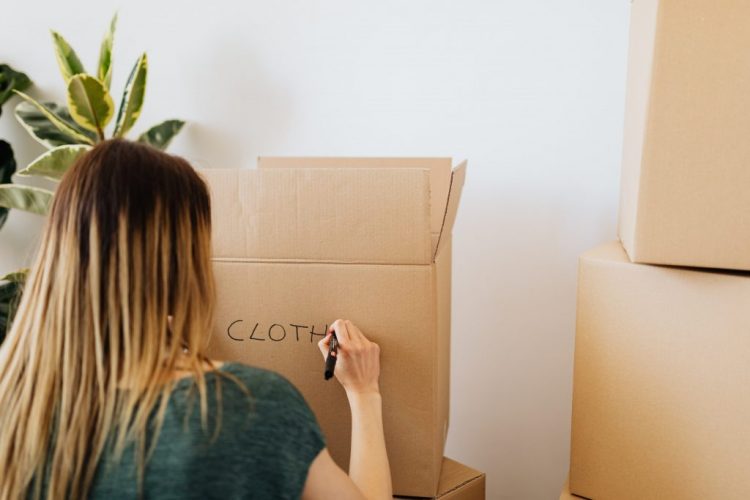How to Pack Awkward and Odd-Shaped Things

Moving is a challenging endeavour, but nothing quite tests your patience like figuring out how to pack those awkwardly shaped items that don’t fit into standard moving boxes. Whether it’s a guitar, a lamp, or a collection of quirky decor, getting these items safely to your new home requires creativity, patience, and a bit of know-how. With the right approach, however, you can ensure that even the trickiest items arrive unscathed. Here’s a comprehensive guide to packing those odd-shaped belongings for your move.
Start with a Detailed Plan

Before diving into the packing process, take some time to assess the items that don’t easily fit into boxes. Each awkwardly shaped item presents its own unique challenges, so it’s crucial to understand what you’re dealing with before you begin. A good plan will not only save you time but also ensure that everything is packed securely.
Steps to Planning:
- Create an Inventory: Make a list of all the odd-shaped items you need to pack. This will help you identify what special materials or techniques you might need.
- Assess Fragility: Determine which items are particularly fragile and require extra protection. This includes items with delicate surfaces, intricate details, or breakable parts.
- Consider Weight and Size: Heavy or large items might require extra reinforcement, while smaller items might need more padding to avoid getting lost in a larger box.
- Identify Moving Parts: Any item with moving parts, such as furniture with drawers or appliances with doors, should be packed in a way that prevents these parts from shifting during transport.
Once you’ve answered these questions, you’ll have a clearer idea of how to proceed with each item.
Gather the Right Packing Supplies
The key to successfully packing awkward items lies in having the right materials on hand. The standard moving supplies—boxes, tape, and bubble wrap—are just the beginning. Here’s a more comprehensive list of what you might need:
- Bubble Wrap and Foam Padding: Essential for wrapping fragile items, bubble wrap provides cushioning to protect delicate surfaces. Foam padding is also useful for filling in gaps and preventing movement within the box.
- Stretch Wrap: Ideal for securing items with moving parts, stretch wrap can keep drawers, doors, and other components from shifting during the move. It’s also great for bundling items together.
- Furniture Blankets or Moving Pads: These heavy-duty blankets protect large items like furniture, mirrors, or appliances from scratches and dents. They’re also useful for wrapping items that won’t fit into a box.
- Custom Boxes or Crates: For particularly awkward items, standard boxes might not cut it. Custom boxes or even wooden crates can be made to fit your item’s exact dimensions, offering extra protection.
- Packing Paper and Peanuts: Packing paper is excellent for wrapping fragile items and filling empty spaces in boxes. Packing peanuts provide lightweight cushioning and can prevent items from shifting during transit.
- Rope, Twine, or Bungee Cords: For securing larger items or bundles, these can be invaluable. They can also help in securing items to the sides of a moving van to prevent shifting.
Having these supplies ready will make the packing process much more efficient and will give you confidence that your items are well-protected.
Packing Specific Odd-Shaped Items
Each odd-shaped item will require a different approach. Here’s how to handle some of the most common challenges:
1. Musical Instruments
Musical instruments are not only awkward in shape but also highly sensitive to damage. For string instruments like guitars or violins, start by loosening the strings to relieve tension, which can prevent warping. Wrap the entire instrument in bubble wrap, paying extra attention to the neck and headstock, which are particularly vulnerable. Place the instrument in its hard case, if available, and fill any empty spaces with crumpled packing paper. If you don’t have a hard case, a custom box lined with foam or additional bubble wrap can serve as a makeshift case.
For brass or woodwind instruments, disassemble them into their main components, wrap each piece in bubble wrap, and place them in a padded case. For drums and other percussion instruments, wrap each drum individually and consider using padded covers or cases designed specifically for drum kits.
2. Lamps and Lampshades
Lamps are tricky due to their fragile bases and delicate shades. Start by disassembling the lamp if possible. Remove the lightbulb and lampshade, and wrap each part separately. The lamp base should be wrapped in several layers of bubble wrap or a moving blanket, ensuring that the cord is secured and doesn’t dangle. Place the base in a sturdy box, and fill any gaps with packing peanuts or crumpled paper to prevent movement.
Lampshades are easily crushed, so pack them separately in a box that’s just big enough to hold them. Place the lampshade inside the box, upside down, with the open side facing up, and fill the box with light packing material like tissue paper or peanuts. Never place heavy items on top of a lampshade box.
3. Artwork, Mirrors, and Glass Panels

Packing artwork, mirrors, and glass panels requires careful handling to avoid shattered glass and damaged frames. For framed artwork and mirrors, start by applying masking tape in a crisscross pattern across the glass. This helps absorb shock and holds the glass together if it breaks.
Next, wrap the entire piece in bubble wrap, securing it with tape. Place the wrapped artwork or mirror between two pieces of thick cardboard cut to size, or use corner protectors to safeguard the edges. For larger pieces, invest in mirror boxes, which are designed to fit around flat, fragile items.
Consider using a custom crate for particularly valuable or oversized artwork. The crate can be lined with foam padding to absorb shock during transit. Label the crate with “FRAGILE” and “THIS SIDE UP” to ensure it’s handled correctly during the move.
4. Bicycles and Sports Equipment
Bicycles are bulky and have numerous parts that can get damaged if not packed properly. If possible, partially disassemble the bike by removing the wheels, pedals, and handlebars. Wrap each part in bubble wrap, and place them in a bike box or individual boxes. For the frame, use stretch wrap to secure moving parts and prevent them from shifting. Protect the frame with blankets or padded covers to prevent scratches and dents.
For other sports equipment like skis, snowboards, or golf clubs, consider purchasing padded cases specifically designed for these items. If you don’t have a case, wrap each item in bubble wrap and secure it with stretch wrap. Place the wrapped equipment in a sturdy box, filling any gaps with packing material to prevent shifting.
5. Sculptures and Oddly Shaped Decor
Sculptures and unique decor items often don’t fit neatly into a box, and they’re usually fragile. Start by wrapping each item in bubble wrap, securing it with tape. Pay special attention to delicate parts like limbs or intricate details that could easily break. Place the wrapped sculpture in a box that’s slightly larger than the item, and fill the box with packing peanuts or crumpled paper. For extremely delicate or valuable pieces, consider double-boxing—placing the item in a smaller box and then placing that box inside a larger one with additional padding.
If the sculpture is large or heavy, a custom crate may be the best option. The crate can be lined with foam padding to absorb shock during transit.
6. Appliances and Electronics
Packing appliances and electronics requires careful preparation. Start by unplugging and disassembling any removable parts, such as shelves, drawers, or cables. Wrap each part separately in bubble wrap, and label them for easy reassembly. For the main appliance, use stretch wrap to secure any doors, lids, or other moving parts. Wrap the entire appliance in a moving blanket or bubble wrap for added protection.
For electronics like TVs or computers, place them in their original boxes if possible. If not, use a sturdy box with plenty of padding. Wrap the device in a blanket or bubble wrap, and fill any empty spaces with packing peanuts or crumpled paper to prevent movement. Label the box as fragile and indicate which side should face up.
Think Outside the Box (Literally)
When dealing with items that simply won’t fit into a standard box, it’s time to get creative. Large, soft items like bean bags or stuffed animals can be packed in large plastic bags or even vacuum-sealed to save space. This method is particularly useful for items that aren’t fragile but take up a lot of room.
For unusually shaped or oversized items, consider custom crates. These crates are designed to fit your item perfectly, offering maximum protection. While custom crates can be an additional expense, they’re worth it for ensuring the safety of particularly valuable or delicate items.
Another creative solution is to repurpose household items as packing materials. For instance, use towels, blankets, or clothing to wrap fragile items, which not only protects them but also saves on packing materials and maximises space.
Labelling: A Crucial Step

Once everything is packed, proper labelling is essential. Clearly mark each box with its contents, the room it belongs to, and any special handling instructions. For example, boxes containing fragile items should be labelled “FRAGILE” on all sides, and those containing artwork or mirrors should indicate “THIS SIDE UP.”
Effective labelling will make the unpacking process much smoother and help ensure that your items are handled with care throughout the move.
Consider Professional Packing Services
Packing awkward and oddly shaped items can be time-consuming and stressful. If you’re feeling overwhelmed, it might be worth hiring professional movers who have the experience and materials to handle these challenges. Professionals can provide custom packing solutions, ensuring that your items are packed securely and efficiently. They also offer insurance options, giving you peace of mind that your belongings are protected.
If you are not sure where to start in hiring professional movers, WhatManandVan can connect you with man and van companies all over the UK, including London, Brighton, Oxford, Reading, Milton Keynes, and many more. Our partners can help you with packing, moving house, moving office, furniture transfers, and rubbish clearance among many other services.
Unpacking with Care: The Final Step
Once you arrive at your new home, take your time unpacking. Start with the most fragile or valuable items, and carefully inspect each one for any damage. Use the labels on your boxes to place each item in its intended room, which will make the unpacking process more organised.
For particularly complex items, such as disassembled furniture or electronics, refer back to the labels and instructions you made during the packing process. Taking a methodical approach to unpacking will help you avoid any mishaps and ensure that your items are set up correctly in your new space.
Final Thoughts
Packing awkward and odd-shaped items for a move can be challenging, but with careful planning, the right materials, and some creativity, you can ensure that everything arrives safely at your new home. Remember to take your time, think outside the box when necessary, and don’t hesitate to seek professional help if needed. By following these tips, you’ll be well-prepared for a smooth and stress-free move, no matter how unconventional your belongings may be.
Good luck with your move, and may all your items arrive safely and soundly!